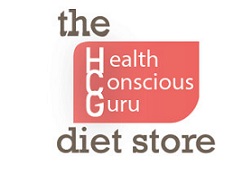Categories
Categories
Three Kinds of Fat Per Dr. Simeons
Posted by on

The human body contains three kinds of fat. These are structural fat, normal fat, and abnormal fat.
Structural Fat
The first type of fat, according to Dr. Simeons, is structural fat. Structural fat fills the gaps between the organs in our bodies. It supports the kidneys, protects the coronary arteries, and it's responsible for padding our skin and keeping it looking soft and supple. Without structural fat, the bottoms of our feet would be nothing but bones and skin, and walking would be impossible. Structural fat is absolutely essential for overall good health.
Normal Fat
The second type of fat is normal fat. This is the fat that contains the fuel that our bodies readily use when we're not eating enough food to supply nutrients and fuel to our organs and muscles. Normal fat reserves are located all around the body. Normal fat packs a huge amount of calories into a small space for optimum efficiency. Even if your normal fat stores are large, they're still normal, and they're still used for fuel.
Normal fat ranges vary based on age, gender, and activity level, and appropriate levels of normal body fat are critical for good health and longevity. Depending on a number of factors, normal body fat percentages range from 20 percent to 38 percent.
Abnormal Fat
Abnormal fat is that which isn't readily available for the body to use as fuel. Once the diencephalon has reached its fat-banking capabilities, excess fat begins to be stored in these abnormal deposits.
Abnormal fat is stored in various places around the body, including the buttocks, chin, abdomen, upper arms, and knees. Since these fat reserves don't contribute to metabolism, they become a permanent part of the obese body.
Traditional Dieting
In general, when someone who is obese tries to reduce calories to lose body fat, it's the normal fat reserves that are used up to compensate for the reduction in calories. While the abnormal fat reserves remain intact and unchanged, normal fat reserves are depleted, and this leads to feelings of weakness and hunger as well as drawn, haggard-looking faces and wrinkled skin.
According to Dr. Simeons, a large body requires more caloric energy to maintain a certain body temperature than a smaller body, which can stay at the proper temperature with fewer calories. He points out that you might suppose that if someone who is obese eats only as much food as the body needs to function properly, that person's weight shouldn't change. But in reality, this doesn't occur, and in fact, many people who are obese actually gain weight on low-calorie diets.
The HCG Protocol and Abnormal Fat Loss
Dr. Simeons found that small daily amounts of HCG work to release between 1,500 and 5,000 calories' worth of abnormal fat into the bloodstream when caloric intake from food is restricted to just 500 calories a day. The released abnormal fat then fuels the body while the normal fat reserves remain intact. In this way, abnormal fat reserves are lost without the hunger and without the lethargy, irritability, and haggard appearance that a standard low-calorie diet precipitates.
 Loading... Please wait...
Loading... Please wait... 